Skip to comments.
The FReeper Foxhole Studies The History of Submarine Technology - December 12th, 2003
Various
Posted on 12/12/2003 12:01:15 AM PST by SAMWolf
|

Lord,
Keep our Troops forever in Your care
Give them victory over the enemy...
Grant them a safe and swift return...
Bless those who mourn the lost.
.
FReepers from the Foxhole join in prayer
for all those serving their country at this time.

...................................................................................... ........................................... |
|
|
|
|
|
|
U.S. Military History, Current Events and Veterans Issues
 Where Duty, Honor and Country
Where Duty, Honor and Country
are acknowledged, affirmed and commemorated.
|

| Our Mission: The FReeper Foxhole is dedicated to Veterans of our Nation's military forces and to others who are affected in their relationships with Veterans. In the FReeper Foxhole, Veterans or their family members should feel free to address their specific circumstances or whatever issues concern them in an atmosphere of peace, understanding, brotherhood and support. The FReeper Foxhole hopes to share with it's readers an open forum where we can learn about and discuss military history, military news and other topics of concern or interest to our readers be they Veteran's, Current Duty or anyone interested in what we have to offer. If the Foxhole makes someone appreciate, even a little, what others have sacrificed for us, then it has accomplished one of it's missions. We hope the Foxhole in some small way helps us to remember and honor those who came before us.
To read previous Foxhole threads or
to add the Foxhole to your sidebar,
click on the books below.
|
|
|
|
|
|
History of Submarine Technology


Turtle
David Bushnell’s Turtle was the first American submarine. Built in 1775, was created to break the British blockade of New York Harbor during the Revolutionary War. With slight positive buoyancy, it normally floated with approximately six inches of exposed surface. It was propelled by a hand driven propeller. The operator would attach his mine to the target using a screw attached to the vertical propeller.

Alligator
The Alligator was the first submarine purchased by the U.S. Navy. It contained two crude air purifiers, a chemical based system for producing oxygen and a bellows to force air through lime.

Hunley
The Confederate Submarine H.L. Hunley is credited with the first recorded successful underwater attack, against the USS Housatonic using a torpedo, which was projected from the submarine by a pole. Eight men turned the propeller using a handcrank. Maximum speed was 4 knots. Air was provided by two four-foot pipes, although the hull contained enough air for approximately ½ hour of submerged operations.

Intelligent Whale
The Intelligent Whale, a man-powered submarine purchased by the U.S. Navy in 1870, but never placed into service, featured air purifiers, pressurized air to empty ballast tanks and the ability to release a diver while submerged. The Intelligent Whale is credited with inspiring John Holland to develop his first submarine.

USS Holland
The USS Holland had been purchased at the suggestion of the Assistant Secretary of the Navy, Theodore Roosevelt in 1898. He saw the potential use of this type of vessel in Havana Harbor during the Spanish-American War. John P. Holland’s company was purchased by his electric battery supplier in 1900. The resulting firm, Electric Boat Company of Groton, CT, grew to become one of Connecticut’s largest employers throughout the 20th Century.

USS Seal
USS Seal, the first U.S. submarine built by Simon Lake. Mr. Lake was the only competitor of John Holland and is credited with the following design aspects of the modern submarine: escape trunk, conning tower, diving planes, control room, and the rotating, retractable periscope.

C-1
Coastal and harbor defense was one of the earliest missions of the submarine force. Since early submarines could not transit over long distances they were transported by colliers. The U.S. Navy recognized the need to improve submarine design to allow for long range, high-speed operation while submerged. During the winter of 1909, the U.S. submarine C-1 conducted the first tests of the predecessor to today’s snorkel masts. Called ventilator tubes, this technological innovation provided surface air to the diesel engines while the submarine was at periscope depth.

S-83
Simon Lake’s R-6 (S-83) submarine served as a test platform for the first U.S. experimental snorkel in 1945.

L-10
L-10, one of the Electric Boat L class submarines. This class introduced the first strengthened internal bulkheads in submarines, which allowed the boats to dive to deeper depths.

L-boats
The L-boats, stationed in the Azores during World War One, introduced air purification to the submarine fleet. Stale air was blown over chemicals, and compressed oxygen was released into the submarine to supplement the interior atmosphere.

H-2
World War I illustrated a need to shift the priorities in submarine construction and operation. In order to be effective combatants, submarines required improved stealth capabilities such as rapid submergence (i.e., crash dives) and long submerged endurance at low speeds following a torpedo attack. Existing submarines were all considered too small to incorporate these capabilities. However, such designs like the H-boat pictured here, H-2 (circa 1920), were the only ones that could be built quickly. As a result, these submarines were overloaded with the addition of key elements required for wartime sailing-chariot bridge, torpedo room ventilation, oscillator, and gyrocompass.

Argonaut
Following World War I, a long range, high endurance submarine became a critical need. The first U.S. unit was authorized for construction in 1925. V-4, later renamed Argonaut, was originally intended for a minelaying mission. This submarine had twice the battery volume of earlier designs and included the first 240v electrical system, allowing for smaller onboard electric motors. Argonaut served as a predecessor to the submarine designs utilized during World War II.

S-1
Another consideration in the early 1920s was the use of a submarine to forward deploy aircraft. Submarine S-1 was the first U.S. submarine fitted out and extensively tested with a small scout plane.

Cuttlefish
The Cuttlefish was basically an Americanized U-boat. This design incorporated the first complete double hull in a U.S. submarine and had an 11,000 nm range at 19 kts.

S-class
The S-class boats were used as the test platforms for a range of sonar designs tested in the 1920s and 1930s. Higher frequencies and small, trainable transducers allowed for narrow beam width and exclusion of natural sea noises and other interference.

Porpoise
The Porpoise (SS-172) class was the first all-electric drive submarine, and the precursor to the World War II fleet submarines. With its new diesel engine, this design had a maximum surface speed of 19 kts. Auxiliary diesels avoided the need to drain the battery while operating surfaced. This reduced battery charging cycles from 150/year to 30/year, greatly extending battery life.

Gato
Gato (SS 212) provided the prototype design for the World War II vintage submarine. Construction of this class was accelerated in 1940 due to the escalation of the war in Europe. In order to increase production capability the Manitowoc Shipbuilding Company in Wisconsin was contracted to build submarines under license from Electric Boat.

Herring
The advent of the submarine bathothermograph (SBT) in 1942 provided the submarine force with an important tool for covert patrol operations and attacks. Herring (SS-233), pictured, was an early example of the successful application of the SBT.

Irex
Within two years of the end of the war, the U.S. Navy had a functional snorkel mast on an operational, high speed submarine- the Irex (SS 482).

Tang
The Tang was the first submarine designed for underwater performance rather than surfaced speed and handling. Key features included removing the deck guns, streamlining the outer hull, replacing the conning tower with a sail, installing new propellers designed for submerged operations, installing more air conditioning and a snorkel mast, and doubling the battery capacity.

Guavina
In 1951 the submarine force achieved another important milestone. Guavina (SS 362) used an experimental searchlight sonar to distinguish the sound signature of Seacat (SS 399) and the fleet tug Salinian (ATF 161) at ranges of 9-10 nm.

Albacore
The experimental submarine Albacore (AGSS-569) introduced the distinctive teardrop shape hull, which has influenced all follow-on submarine designs. This design provided for major advances in noise reduction, underwater speed and the use of low carbon (HY-80) as a structural steel. It also tested the first fiberglass sonar dome, installed in 1953.

Barbel
The first warships built with a teardrop shape hull were the Barbel (SS 580) class. This class was also the first to incorporate a centralized arrangement of ship controls and combat operations, or "attack center".
FReeper Foxhole Armed Services Links
 
   |
TOPICS: VetsCoR
KEYWORDS: freeperfoxhole; michaeldobbs; navy; samsdayoff; submarines; usn; veterans
Navigation: use the links below to view more comments.
first 1-20, 21-40, 41-60, 61-80 ... 121-136 next last
The Nuclear Age
 The USS Nautilus, pictured above, represented a watershed for the U.S. Navy’s submarine program. This was the world’s first nuclear-powered submarine, a design improvement which allowed for a dramatic increase in range and operational flexibility. The Nautilus is also credited with forcing the shipbuilders to develop an improved quality control program.
The USS Nautilus, pictured above, represented a watershed for the U.S. Navy’s submarine program. This was the world’s first nuclear-powered submarine, a design improvement which allowed for a dramatic increase in range and operational flexibility. The Nautilus is also credited with forcing the shipbuilders to develop an improved quality control program.

The USS Seawolf (above) was the first and only submarine built with a liquid metal nuclear reactor. The liquid metal (sodium) provided a more efficient power plant, but posed several safety hazards for the ship and crew.

The USS Skate (above) was the lead ship of the first production class of four nuclear propelled submarines and was the first submarine to surface at the North Pole.

USS Triton
The USS Triton was the first submarine ever built with two reactor plants. In addition, until the commissioning of the Ohio Class Ballistic Missile Submarines, the Triton was the longest submarine ever built by the U.S. Navy.

USS Halibut
The USS Halibut, the first submarine designed and built for the specific purpose of serving as a platform to fire guided missiles.

USS Skipjack
The USS Skipjack was the first nuclear-powered submarine built with the Albacore hull design. It also was the first nuclear submarine with a single propulsion shaft and screw. Another first was mounting bow planes on the sail which reduced flow noise at the bow-mounted sonar. Deep-diving and high speed capabilities were the result of HY-80 construction and a new reactor design, the S5W. This reactor became the U.S. Navy’s standard until the Los Angeles class joined the fleet in the mid-1970’s.

USS Tullibee
In 1956 Admiral Arleigh Burke, then CNO, requested that the Committee on Undersea Warfare of the National Academy of Sciences study the effect of advanced technology on submarine warfare. The result of this study, dubbed "Project Nobska" was an increased emphasis on deeper-diving, ultraquiet designs utilizing long-range sonar. The USS Tullibee incorporated three design changes based on Project Nobska. First, it incorporated the first bow-mounted spherical sonar array. This required the second innovation, amidships, angled torpedo tubes. Thirdly, Tullibee was propelled by a very quiet turboelectric power plant.

USS Tinosa
The Permit class was also based on Project Nobska’s recommendations. Hull streamlining, reduction in sail dimensions by approximately 50 percent, quieting of the S5W reactor plant and an increase in test depth all lead to a dramatic advance in submarine operational capabilities and stealth. The lead ship of this class, the USS Thresher (SSN 593), was lost at sea during post-overhaul trials. Lessons learned from this tragedy resulted in major design and shipboard operational improvements which still influence the submarine force. Pictured here is USS Tinosa (SSN606).

USS George Washington
The USS George Washington (SSBN 598) was the world’s first nuclear powered ballistic missile submarine. Arguably, it can be considered the submarine that has most influenced world events in the 20th Century. With its entry into service in December 1959 the United States instantly gained the most powerful deterrent force imaginable, a stealth platform with enormous nuclear firepower.

The Sturgeon class was an extension and improvement on the Permit design. This class of 37 submarines became the workhorse of the fleet from the mid-1960’s through the 1980’s when the Los Angeles class entered the fleet in large numbers.

USS Narwhal
The USS Narwhal (SSN 671) was built as the prototype platform for an ultra-quiet natural circulation reactor design. This allows for operation with the large water circulating pumps, a major source of radiated noise, secured. It is similar to the Sturgeon design in other respects.

USS Glenard P. Lipscomb
The USS Glenard P. Lipscomb (SSN 685) was the U.S. Navy’s second prototype design using a turbo-electric power plant similar to the Tullibee. While this design is quieter, it is heavier and larger than conventional drive trains. Those disadvantages, along with reliability issues led to the decision not to utilize this design on a wide scale.

The Los Angeles class currently serves as the "backbone" of the submarine fleet and is likely to remain so well into the 21st Century. These submarines are faster, quieter and far more capable than any of their predecessors. Later ships in the class have incorporated design improvements especially in sonar and electronics areas as well as the addition of external cruise missile launch tubes.

USS Ohio
The USS Ohio (SSBN 726) is the lead ship of the current fleet of eighteen ballistic missile submarines. This class incorporated tremendous improvements in noise quieting, ease of maintenance and performance over earlier designs. In addition, this class introduced a more accurate and longer range missile that eliminated the need for these submarines to be homeported overseas.

USS Seawolf
Commissioned on July 19, 1997, the USS Seawolf (SSN 21) is the latest submarine to enter the fleet, and the first completely new design in approximately thirty years. It is the fastest, quietest and most heavily armed submarine in the world. The Seawolf class can carry up to 50 torpedoes/missiles, or 100 mines.
Armed with Tomahawk cruise missiles, Seawolf can target about 75 percent of the earth’s land mass for strike missions and can target surface ships at long range. The Seawolf is significantly quieter and faster than any Los Angeles class submarine, and has twice as many torpedoes tubes and a 30 percent increase in weapons magazine size.
Today's Educational Sources and suggestions for further reading:
www.onr.navy.mil/focus/blowballast/sub/history1.htm
www.auburn.edu/student_info/trident/history/history.html
www.inventors.about.com/library/inventors/blsubmarine4.htm
www.submarinesailor.com/history
1
posted on
12/12/2003 12:01:15 AM PST
by
SAMWolf
To: All
New Attack Submarine ~ The Virginia Class
 The USS Virginia (SSN 774) will be the lead ship in the newest class of fast attack submarines. The Navy team responsible for the Virginia class, previously known as the New Attack Submarine (NSSN), has been working closely with the Advanced Research Projects Agency, Navy and national laboratories, and industry to incorporate leading-edge technology into every facet of the design at an affordable price.
The USS Virginia (SSN 774) will be the lead ship in the newest class of fast attack submarines. The Navy team responsible for the Virginia class, previously known as the New Attack Submarine (NSSN), has been working closely with the Advanced Research Projects Agency, Navy and national laboratories, and industry to incorporate leading-edge technology into every facet of the design at an affordable price.

This technology insertion will provide the Virginia class with the tools necessary to fight in the world’s littorals. Still fully capable of open-ocean ASW, Virginia will also be equipped with weapons, sensors, and some special new equipment that optimize joint operations in shallower coastal regions, including land attack, intelligence gathering, mine reconnaissance and supporting special forces.

2
posted on
12/12/2003 12:02:09 AM PST
by
SAMWolf
(Reading taglines makes you stupid.)
To: All

Veterans for Constitution Restoration is a non-profit, non-partisan educational and grassroots activist organization. The primary area of concern to all VetsCoR members is that our national and local educational systems fall short in teaching students and all American citizens the history and underlying principles on which our Constitutional republic-based system of self-government was founded. VetsCoR members are also very concerned that the Federal government long ago over-stepped its limited authority as clearly specified in the United States Constitution, as well as the Founding Fathers' supporting letters, essays, and other public documents.

Tribute to a Generation - The memorial will be dedicated on Saturday, May 29, 2004.

Actively seeking volunteers to provide this valuable service to Veterans and their families.
3
posted on
12/12/2003 12:02:33 AM PST
by
SAMWolf
(Reading taglines makes you stupid.)
To: Aeronaut; carton253; Matthew Paul; mark502inf; Skylight; The Mayor; Prof Engineer; PsyOp; ...

FALL IN to the FReeper Foxhole!

Good Friday Morning Everyone
If you would like added to our ping list let us know.
4
posted on
12/12/2003 12:03:13 AM PST
by
SAMWolf
(Reading taglines makes you stupid.)
To: SAMWolf
Good morning Sam.

5
posted on
12/12/2003 1:06:31 AM PST
by
Aeronaut
(In my humble opinion, the new expression for backing down from a fight should be called 'frenching')
To: SAMWolf; snippy_about_it; bentfeather; Darksheare; Johnny Gage; Light Speed; Samwise; ...
Howdy everyone! 
Hello service men and women, past and present!
THANK YOU for serving the USA!
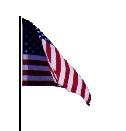
6
posted on
12/12/2003 1:20:37 AM PST
by
radu
(May God watch over our troops and keep them safe)
To: SAMWolf
If you ever get up to Manitowoc, Wisconsin, go to the Maritime Museum and see
Cobia, an intact (except for gaping holes in the pressure hull to let the fat arsed tourists in and out) World War Two fleet boat. She did two combat patrols against Japan.
Every piece of electronics is intact, every tube plugged in, every power cable, pipe, and lighting fixture, bulkhead fittings, evaporators, engines, electrical fuses, switchgear, everything is there.
7
posted on
12/12/2003 2:32:11 AM PST
by
Iris7
("Duty, Honor, Country". The first of these is Duty, and is known only through His Grace)
To: SAMWolf; snippy_about_it
First time I saw
Cobia the tour guide was a young woman. Other tourists were asking her questions, turned out she wanted to be an Officer.
I was in a grumpy mood, and being an old enlisted man, with certain prerogatives, decided to see what she was made out of. Verbally, of course, a fist fight would have been inappropriate!!
She had my respect when I left. I'd work for her.
8
posted on
12/12/2003 2:45:46 AM PST
by
Iris7
("Duty, Honor, Country". The first of these is Duty, and is known only through His Grace)
To: SAMWolf
Good morning, Sam and everyone at the Foxhole. We're epxecting 4-7 inches of snow with some freezing rain over parts of Northern and Western Oklahoma today.
9
posted on
12/12/2003 3:07:37 AM PST
by
E.G.C.
To: SAMWolf
Let your gentleness be known to all men. The Lord is at hand. —Philippians 4:5

Nothing is so strong as gentleness, nothing so gentle as real strength. —Francis de Sales
10
posted on
12/12/2003 4:01:43 AM PST
by
The Mayor
(Remember to Pray for out Troops every moment of every day!)
To: SAMWolf
Morning Sam

11
posted on
12/12/2003 4:07:15 AM PST
by
GailA
(Millington Rally for America after action http://www.freerepublic.com/focus/f-news/872519/posts)
To: SAMWolf

Today's classic warship, USS Mississippi (BB-41)
New Mexico class battleship
displacement. 32,000 t.
length. 624'
beam. 97'5"
draft. 30'
speed. 21 k.
complement. 1,081
armament. 12 14", 14 5", 4 3", 2 21" tt.
USS Mississippi (BB-41) was laid down 5 April 1915 by Newport News Shipbuilding Co., Newport News, Va.; launched 25 January 1917; sponsored by Miss Camelle McBeath; and commissioned 18 December 1917, Capt. J. L. Jayne in command.
Following exercises off Virginia, Mississippi steamed 22 March 1918 for training in the Gulf of Guacanayabo, Cuba. One month later she returned to Hampton Roads and cruised between Boston and New York until departing for winter maneuvers in the Caribbean 31 January 1919. On 19 July she left the Atlantic seaboard and sailed for the west coast. Arriving at her new base, San Pedro, she operated along the west coast for the next 4 years, entering the Caribbean during the winter months for training exercises.
During gunnery practice on 12 June 1924 off San Pedro, 48 of her men were asphyxiated as a result of an explosion in her No. 2 main battery turret. On 15 April 1925 she sailed from San Francisco for war games off Hawaii, and then steamed to Australia on a good will tour. She returned to the west coast 26 September, and resumed operations there for the next 4 years. During this period she frequently sailed into Caribbean and Atlantic waters for exercises during the winter months.
Mississippi entered Norfolk Navy Yard 30 March 1931 for a modernization overhaul that gave her an all-new superstructure, improved armament and enhanced protection, departing once again on training exercises in September 1933. Transiting the Panama Canal 24 October 1934, she steamed back to her base at San Pedro. For the next 7 years she operated off the west coast, except for winter Caribbean cruises.

Returning to Norfolk 16 June 1941, she prepared for patrol service in the North Atlantic. Steaming from Newport, R.I., she escorted a convoy to Hvalfjordur, Iceland. She made another trip to Iceland 28 September 1941, and spent the next 2 month there protecting shipping.
Two days after the treacherous attack on Pearl Harbor, Mississippi left Iceland for the Pacific. Arriving 22 January 1942 at San Francisco, she spent the next 7 months training and escorting convoys along the coast. On 6 December, after participating in exercises off Hawaii, she steamed with troop transports to the Fiji Islands, returning to Pearl Harbor 2 March 1943. On 10 May she sailed from Pearl Harbor to participate in a move to restore the Aleutians to their rightful possessors. Kiska Island was shelled 22 July, and a few days later the Japanese withdrew. After overhaul at San Francisco, Mississippi sailed from San Pedro 19 October to take part in the invasion of the Gilbert islands. Wile bombarding Makin 29 November, a turret explosion, almost identical to the earlier tragedy, killed 43 men.
On 31 January 1944 she took part in the Marshall Islands campaign, shelling Kwajalein. She bombarded Taroa 20 February, and struck Wotje the next day. On 15 March she pounded Kavieng, New Ireland. Due for an overhaul, she spent the summer months at Puget Sound.
Returning to the war zone, Mississippi supported landings on Peleliu, in the Palau islands, on 12 September. After a week of continuous operations she steamed to Manus, where she remained until 12 October. Departing Manus, she assisted in the liberation of the Philippines, shelling the east coast of Leyte on 19 October. On the night of the 24th, as part of Admiral Oldendorf's battleline, she helped to destroy a powerful Japanese task force at the Battle of Suriago Strait. As a result of the engagements at Leyte Gulf, the Japanese navy was no longer able to mount any serious offensive threat.

Mississippi continued to support the operations at Leyte Gulf until 16 November, when she steamed to the Admiralty Islands. She then entered San Pedro Bay, Leyte, 28 December, to prepare for the landings on Luzon. On 6 January 1945 she began bombarding in Lingayen Gulf. Despite damages near her waterline received from the crash of a suicide plane, she supported the invasion forces until 10 February. Following repairs at Pearl Harbor, she sailed to Nakagusuku Wan, Okinawa, arriving 6 May to support the landing forces there. Her powerful guns leveled the defenses at Shuri Castle, which had stalled the entire offensive. On 5 June, a kamikaze crashed into her starboard side, but the fighting ship continued to support the troops at Okinawa until 16 June.
After the announced surrender of Japan, Mississippi steamed to Sagami Wan, Honshu, arriving 27 August as part of the support occupation force. She anchored in Tokyo Bay, witnessed the signing of the surrender documents, and steamed for home on 6 September. She arrived 27 November at Norfolk, where she underwent conversion to a gunnery training and weapons development ship and given the hull number AG-128, effective 15 February 1946. As part of the development force, she spent the last 10 years of her career carrying out investigations of gunnery problems and testing new weapons, while based at Norfolk. She helped launch the Navy into the age of the guided-missile warship when she successfully test fired the Terrier missile on 28 January 1953 off Cape Cod. She also assisted in the final evaluation of the Petrel, a radar-homing missile, in February 1956.

Mississippi decommissioned at Norfolk 17 September 1956, and was sold for scrapping to the Bethlehem Steel Co., on 28 November, the same year.
Mississippi received eight battle stars for World War II service.
12
posted on
12/12/2003 5:24:34 AM PST
by
aomagrat
(IYAOYAS)
To: SAMWolf; snippy_about_it
A fascinating read, SAM and snippy. Many of the submarines' names are as familiar as family names, some are completely new to me. I remember seeing the Nautilus docked in New Orleans in the mid-fifties. From a high wharf, it looked like a black sliver on the river's surface, but knowing that it was NUKE was awesome!
Good morning to all at the foxhole kaffeklatch!
13
posted on
12/12/2003 5:38:13 AM PST
by
WaterDragon
(GWB is The MAN!)
To: SAMWolf
On This Day In History
Birthdates which occurred on December 12:
1673 Ahmed III 23rd sultan (Turkey, 1703-30)
1745 John Jay (statesman: 1st Chief Justice of U.S. Supreme Court [1789-1795])
1805 Abolitionist William Lloyd Garrison
1805 Henry Wells, founder (American Express and Wells Fargo)
1806 Stand Watie Brigadier-General (Confederate Army), died in 1871
1821 Gustave Flaubert (author: Madame Bovary)
1863 Edvard Munch, Norway, painter/print maker (The Scream)
1875 - Karl R G von Rundstedt, German fieldmarshal
1893 Edward G. Robinson (Emmanuel Goldberg) (actor: Little Caesar, Key Largo, Double Indemnity, Scarlet Street)
1913 Jesse Owens US, track star (4 golds 1936), spoiled Hitler's Olympics
1913 Winston Burdett (newsman: CBS)
1915 Francis Albert Sinatra "Chairman of the Board" Hoboken, vocalist/actor
1918 Joe Williams (jazz singer: with Count Basie; actor: The Bill Cosby Show)
1923 TV game show host Bob Barker
1924 Edward I Koch, NYC, (Mayor-D-NYC, 1977-89)/judge (People's Court)
1932 Bob Pettit (basketball: St. Louis Hawks: MVP Award [1956, 1959])
1936 Wally Dallenbach (auto racer: Fastest Ontario 100 Indy racer [1973])
1938 Connie Francis (Franconero) (singer)
1940 Dionne Warwick (Grammy Award-winning singer)
1941 Tim Hauser jazz singer (Manhattan Transfer-Tuxedo Junction)
1943 Dickie Betts (musician: guitar: group: The Allman Brothers)
1950 Danny Bouchard (hockey)
1951 Talk show host Rush Limbaugh
1952 Cathy Rigby (gymnast, actress, TV commercials)
1953 Rafael Septien (football: Dallas Cowboys kicker: Super Bowl XIII)
1959 Musician Sheila E
1962 Former tennis player Tracy Austin
Deaths which occurred on December 12:
0884 Carloman co-king of France (879, 882-884), dies
1112 Tancred monarch of Galilea/Edessa/Antioch, dies
1204 Maimonides [Moses Ben Maimon] Jewish philosopher/talmudic scholar, dies in Cairo at 69
1263 Hakon IV Gamli, King of Norway (1217-63), dies
1600 John Craig, Scottish church reformer/James VI's court vicar, dies
1777 Rev. Benjamin Russen hanged at Tyburn, England for rape
1889 Robert Browning, English poet (Ring & Book), dies at 77
1939 Douglas Fairbanks, actor (Zorro, 3 Musketeers, Robin Hood), dies at 56
1971 David Sarnoff, US TV pioneer (RCA), dies at 80
2000 Actor George Montgomery died in Rancho Mirage, Calif., at age 84.
Reported: MISSING in ACTION
1963 ANGELL MARSHALL J.---ROANOKE VA.
1966 FLESHER HUBERT K.---CLARKSBURG WV.
[02/18/73 RELEASED BY DRV, ALIVE IN 98]
1970 DUCKETT THOMAS A.---LA GRANGE GA.
1970 SKINNER OWEN G.---LIMA OH.
POW / MIA Data & Bios supplied by
the P.O.W. NETWORK. Skidmore, MO. USA.
On this day...
1098 1st Crusaders capture & plunder Mara Syria
1474 Isabella crowns herself queen of Castile & Aragon
1479 Jews are expelled from Schlettstadt Alsace by Emperor Frederick III
1524 Pope Clement VII approves Organization of Jewish Community of Rome
1653 Barebone-parliament ends
1677 Brandenburgs army occupies Stettin
1700 Utrecht/Overijssel/Buren/Leerdam/Ijsselstein adopt Gregorian calendar
1715 Russian/Prussian troops occupy Stralsund
1769 Pope Clement XIV proclaims a universal jubilee
1777 Reverend Benjamin Russen executed at Tyburn, England for rape
1787 Pennsylvania becomes 2nd state to ratify US constitution
1791 Bank of the US opens
1792 In Vienna, Ludwig van Beethoven (21) receives 1st lesson in music composition from Franz Joseph Haydn
1800 Washington DC established as capital of US
1822 México officially recognized as an independent nation by US
1858 1st Canadian coins circulated (1¢, 5¢, 10¢ & 20¢)
1862 Battle of Dumfries VA
1862 Naval Engagement at Yazoo River MS (USS CAIRO torpedoed)
1870 Joseph Rainey (South Carolina) became 1st black sworn into House of Representatives
1871 Jules Janssen discovers dark lines in solar corona spectrum
1878 Joseph Pulitzer begins publishing "St Louis Dispatch"
1884 1st Test match played at the Adelaide Oval
1897 Anti-Jewish violence breaks out in Bucharest Romania
1897 Rudolph Dirks' 1st Katzenjammer cartoon strip in New York Journal
1899 George F Grant of Boston )first black graduate of Harvard College, and a dentist) patents the wooden golf tee
1900 National Negro Anthem, "Lift Every Voice & Sing" is composed
1901 Marconi receives 1st transatlantic radio signal, England to US
1903 Roger Casement completes report about abuses in Belgian Congo
1906 Oscar Straus, 1st Jewish cabinet member, appointed Secretary of Commerce
1912 R Friml/O Harbachs musical "Firefly" premieres in New York NY
1913 "Mona Lisa", recovered after being stolen from the Louvre Museum in 1911
1913 Hebrew language officially used to teach in Palestinian schools
1915 1st all-metal aircraft (Junkers J.1) test flown at Dessau Germany
1915 Aristide Briand forms French war government
1915 Russian troops overrun Hamadan, Persia
1917 Worst train disaster (derailment near mouth of Mount Cenis tunnel) ever (Modane France-543 French troops killed)
1917 Reverend Edward Flanagan founds Boys Town outside Omaha NE
1925 Arthur Heinman coins term "motel", opens Motel Inn, San Luis Obispo
1925 Last Qajar Shah of Iran deposed; Rexa Shah Pahlavi takes over
1926 Leningrad: premier of Dmitri Shostakovich's 1st Pianoconcert
1930 Baseball Rules Committee greatly revises the rule book, when a ball bounces into stands now a double, not a homerun
1931 Japanese Government of Imukai forms
1932 S N Behrmans "Biography" premieres in New York NY
1932 USSR & China resume diplomatic relations
1936 Chinese leader Chiang Kai-shek declares war on Japan
1937 Japanese aircraft shell & sink US gunboat Panay on Yangtze River in China. (Japan apologized & eventually paid US $2.2 million in reparations)
1937 NBC & RCA sends 1st mobile-TV vans onto the streets of New York
1937 Washington Redskins win NFL championship
1939 Soviet prison ship Indigirka, carrying 2,500 prisoners capsizes in blizzard off Japanese coast; 2,470 die
1940 British troops conquer Sidi el-Barrani
1941 German occupying army do a house search in Paris looking for Jews
1941 European reservists on Java mobilizes
1941 Russian 20th army recaptures Soljetsjnogorsk
1942 German offensive in South Western Stalingrad
1945 Special Court of justice convicts NSB-leader Mussert to death
1946 UN accepts 6 Manhattan blocks as a gift from John D Rockefeller Jr
1946 Tide detergent introduced
1947 United Mine Workers union withdrew from AFL
1949 American League votes 7-1 rejecting legalizing the spitball
1951 Joe DiMaggio announces his retirement
1952 Dallas Texans (former Boston Yanks) play last game, last original team
1953 Chuck Yeager reaches Mach 2.43 in Bell X-1A rocket plane
1955 1st prototype of hovercraft patented by British engineer Christoper Cockerell
1957 US announces manufacture of Borazon (harder than diamond)
1957 Major Adrian Drew flies 1,943 kph in F-101 Voodoo
1958 Dutch social democratic party-ministers/premier Drees dismissed
1959 UN Committee on Peaceful Use of Outer Space is established
1961 Ham radio satellite Oscar 1 launched with military Discoverer 36
1961 Martin Luther King Jr & 700 demonstrators arrested in Albany GA
1962 US performs nuclear test at Nevada Test Site
1963 Argentina asks for extradition of ex-President Peron
1963 Kenya (formerly British East Africa) declares independence from UK
1964 Shooting starts for "Star Trek" pilot, "The Cage" (Menagerie)
1964 Cleveland Browns' Frank Ryan sets club record of 5 TD passes
1965 Gale Sayers of Chicago Bears scores 6 TDs, ties NFL record
1965 Beatles last Great Britain concert (Capitol Theatre in Cardiff Wales)
1966 US Supreme Courts votes 4-3 allowing Braves to move to Atlanta
1967 US launches Pioneer 8 into solar orbit
1968 Rolling Stones film TV show "Rock 'n Roll Circus" - it never airs
1968 Arthur Ashe becomes 1st black to be ranked #1 in tennis
1968 US performs nuclear test at Nevada Test Site
1969 "Hello Dolly" with Barbra Streisand premieres
1969 Bomb attack on bank in Milan, 14 killed
1970 Small Astronomy Satellite Explorer 42 launched to study X-rays
1970 Polish government proclaims price rise
1970 USSR performs underground nuclear test
1973 San Diego files anti-trust against National League (stopping Padres move to DC)
1973 Canada begins selling Olympic coins ($5 & $10 silver coins)
1975 Gas stove explodes & starts fire killing 138 (Mecca Saudi Arabia)
1975 Sara Jane Moore pled guilty to trying to kill President Gerald Ford
1976 QB Joe Namath's last game as a New York Jet
1977 Yankees purchase Andy Messersmith from Braves
1979 Gold hits record $462.50 an ounce
1979 Rhodesia becomes the independent nation of Zimbabwe
1980 US's copyright law amended to include computer programs
1981 Wayne Gretzky scores quickest 50th goal (game 39)
1981 Gambia & Senegal sign agreement to be known as Senegambia in Feb 1982
1982 $9,800,000 in cash stolen from money transport car in New York NY
1982 57th Australian Women's Tennis: Chris Evert beats Martina Navratilova (63 26 63)
1983 A truck bomb explodes at the US Embassy in Kuwait
1985 248 US soldiers & 8 crew members die in Arrow Air DC-8 charter crash (Gander, Newfoundland)
1985 NASA launches space vehicle S-207
1986 Microlite aircraft circles world non-stop
1986 David Boon's fourth Test century, 103 vs England at Adelaide
1986 James "Bone Crusher" Smith TKO's WBA champion Tim Witherspoon at Madison Square Garden
1986 Russian Tupolev-134 crashes in East Berlin, 70 killed
1986 South African journalist Zwelakhe Sisulu arrested
1987 Mookie Blaylock sets NBA record of 13 steals in a game
1988 NYC Subway system adds new stations (the Z line)
1988 Sandra Miller of Queens sues Mike Tyson for sexual harassment
1988 3 trains collide in London, 40 die
1988 PLO leader Yasser Arafat accepts Israel's right to exist(riiiight)
1990 US ambassador to Kuwait, Nathaniel Howell leaves Kuwait
1990 US accuses Iraq of dragging its feet on dates for talks
1991 Actor Richard Gere marries super model Cindy Crawford
1991 Maastricht Treaty signed to create a European Community
1991 Tampa Bay Bucaneer Dexter Manley, retires after failing drug test
1992 6.8-7.5 earthquake strikes Flores Island (tsunami kills 3,000)
1992 Japanese crown prince Naruhito announces engagement to Masaka Owada
1992 Julia Kurotchkina, 18, of Russia, crowned 42nd Miss World
1992 New York Giants lose 19-0 to Phoenix Cardinals
1993 Ultra-Nationalists make strong gains in Russian elections
1993 WAQX 104.3 (Q-104) rock format replaces WNCN classic format in New York NY
1995 Amendment to make it illegal to physically desecrate the flag turned down by senate 63-36 (need 2/3 vote)
1995 CBC announces Radio Canada International service to end on March 31
1995 Israeli PM Shimon Peres address both house of US congress
1995 NBA referees return to work after striking
1996 Assassination attempt on Uday (Iraqi's heir to Sadam Hussain)
1997 Carlos the Jackal, "professional revolutionary" goes on trial in Paris
1997 Federal judge sentences Autumn Jackson, who claims to be Bill Cosby's daughter, to 26 months for trying to extort $40 million from him
1997 Florida releases Alex Arias, the last original Marlin
1997 Japanese train builders (Maglev) claim world speed record at 332 MPH
1997 TWA 800 hearings end in Baltimore MD
2000 - A divided U.S. Supreme Court reversed a state court decision for recounts in Florida's contested election, effectively transforming George W. Bush into the president-elect. (The high court agreed, 7-to-2, to reverse the Florida court's order of a state recount and voted 5-to-4 that there was no acceptable procedure by which a timely new recount could take place.)
Holidays
Note: Some Holidays are only applicable on a given "day of the week"
El Salvador : Day of the Indians
Kenya : Independence Day/Jamhuri Day (1963)
Pennsylvania : Ratification Day (1787)
US : Bonza Bottler Day (Party Party Day)
US : Poinsettia Day
World : National Ding-a-ling Day (congratulations tomkow6)
Drunk and Drugged Driving Awareness Month
Religious Observances
Roman Catholic-US : Memorial of Dark Virgin of Guadalupe, patron of México
Roman Catholic : Memorial of Jane Frances de Chantal, religious (optional)
Religious History
1666 The Moscow Council deposed Russian Orthodox Patriarch Nikon, 61. The church synod had sought to bring an end to the struggle between Czar Alexis and Patriarch Nikon, but the antagonism, begun as a call for liturgical reform, ultimately grew into a struggle over the relationship between church and state.
1712 The South Carolina colony passed a "Sunday Law" requiring "all...persons whatsoever" to attend church each Sunday, to refrain from skilled labor, and to do no traveling by horse or wagon beyond the necessary. Infractions of this law were met with a 10_shilling fine and/or a two_hour lock_up in the village stocks.
1767 Anglican clergyman and hymnwriter John Newton wrote in a letter: 'The Lord himself is our Keeper. Nothing befalls us but what is adjusted by His wisdom and love. He will, in one way or another, sweeten every bitter cup, and ere long He will wipe away all tears from our eyes.'
1808 The Bible Society of Philadelphia was organized, the first of its kind in America. Rev. William White was elected first president of the new organization, whose purpose it was to promote and distribute the Scriptures.
1974 Pope Paul VI announced his intention of canonizing Elizabeth Ann Bayley Seton (1774_1821), who had founded the first free Catholic school in the U.S. as well as the religious order known as the Sisters of Charity of St. Joseph.
Source: William D. Blake. ALMANAC OF THE CHRISTIAN CHURCH. Minneapolis: Bethany House, 1987.
Thought for the day :
"Nothing's as mean as giving a little child something useful for Christmas."
Question of the day...
If corn oil comes from corn, where does baby oil come from?
Murphys Law of the day...
You never run out of things that can go wrong.
Amazing fact #908,174...
Michigan was the first state to have roadside picnic tables.
14
posted on
12/12/2003 5:49:26 AM PST
by
Valin
(We make a living by what we get, we make a life by what we give.)
To: SAMWolf; snippy_about_it; All

Good morning everyone in The FOXHOLE!
To: SAMWolf
Morning to all, group...I have a short comment, and a question, if I might...was channel surfing late last night..caught some of the Smithsonian's new Air and Space Annex dedicaation..the place looks awesome..might be fun to organize a Freeper Foxhole weekend field trip there next spring...anyways, they introduced a number of aviation heroes...the loudest applause, by far, went to Col. Paul Tibbets, who, BTW, was introduced as a squadron commander, and NOT as the pilot of the you-know-what...he looks great for his age..seems to have every hair on his head...second biggest applause was for Neil Armstrong......
now, my question...listening to Dick Cheney's remarks, I wondered,though, don't ask me why, if under our National Command Authority system, the VP is considered the Vice-Commander of the Armed Forces?..Is that a recognizeable position..and, as such or not..does the VP receive a miltary salute?.I don't ever recall seeing that occur....
16
posted on
12/12/2003 6:42:28 AM PST
by
ken5050
To: aomagrat
I'm really enjoying your BB series...just started reading them in full...gonna go back over the holidays and catch up on the ones I skipped....thanks for your efforts. Have a question, and no, I'm NOT trying to create work for you, but one of the military weapons projects that always fascinated me was the Navy's attempt to developed a rocket-boosted projectile for the big 18" guns of the New Jersey. I gather they had a pretty successful prototype, whichhad a range of nearly 100 miles, which woyuld have put a huge chunk of the earth's population in range, and at a cost a heck of a lot cheaper than a Tomahawk..the project died when the decision was made to abandon the BB's in the active Navy. That, I gather was due to two factors..the cost of keeping the BB's operational,a nd the huge manning requirements...anyways, those two topics..the "boosted" projectiles, and the likelihood/possibility of ever bringing the BB's back as a platform...might be worth discussing sometimes..
17
posted on
12/12/2003 6:50:31 AM PST
by
ken5050
To: *all
|
Air Power
Nanchang Q-5 "Fantan"
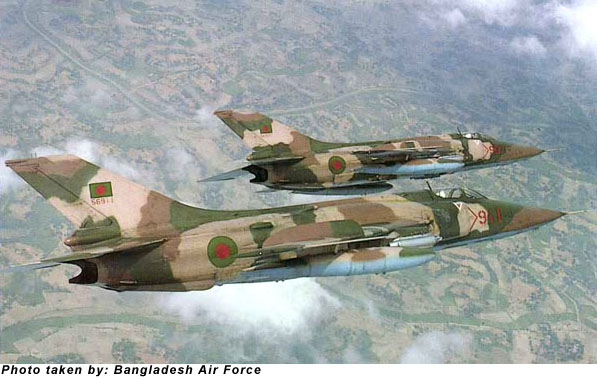 |
The Q-5 [Qiang-5 Attack-5, the export version being designated A-5] is a single-seat, twin-engine supersonic fighter developed by the Nanchang Aircraft Company of China. It offers enhanced combat performance particularly at low and super-low altitude. It is the latest renovated type equipped with imported navigation and attack systems. It is used mainly to assist ground troops in attacking concentrated targets on land, key transportation points and ships near the coast. It can also intercept and fight enemy aircraft. It has two WP-6 after burning type of turbojet engines, a fuselage 15,65 meters long, a height of 4.33 meters, and a wingspan of 9,68 meters. Its maximum takeoff load is 11,300 kg. It carries a cannon in each wing, mounted near the fuselage, and it can be loaded with air to air weapons. It can carry bombs and canisters in its hold and various kinds of bombs, rockets and spare fuel tanks in the racks under its wings.
This derivative of the J-6 fighter originated in August 1958 as a Shenyang design proposal. Reponsibility was assigned to Nanchang. The prototype program was cancelled 1961, but kept alive by small team and resumed officially 1963. The first flight came on 04 June 1965, with preliminary design certificate awarded and preproducton batch authorised late 1965. Further modifications were found necessary, leading to flight test of two much modified prototypes from October 1969. Series production was approved at the end of 1969, with deliveries beginning 1970.
A total of approximately 1,000 aircraft were built, of which nearly 600 were the improved Q-5A variant. An small number, perhaps a few dozen, of the Q-5As were modified to carry nuclear weapons.
PLAAF equipment holdings have improved only slowly, hampered by the need for hard currency, as most Chinese equipment upgrades have required foreign assistance. The upgrade of the Q-5 aircraft centers on the addition of French inertial guidance and attack systems, including a heads-up display and laser range-finder.
As Qiang-5 has been fitted with laser-ranging sensors, its strike accuracy has been greatly improved. The ALR-1 laser-ranging sensor and the heads-up laser-ranging fire control system, which consists of the new-type heads-up display and the air data computer, both have continuous computerized point-of-impact functions. The range of the ALR-1 laser-ranging sensor is 20-10,000 meters and its range precision is 5 meters. Its overall performance is roughly equivalent to that of the British 105D and the French TMV of the 1980s.
The wings are mid-mounted, sharply swept-back, and tapered with blunt tips and wing fences. Two turbojets are located inside the body with semicircular air intakes and two exhausts. The fuselage is thick, flattened, with an upward taper to the rear section. The tail flats are high-mounted on the body, swept-back, and tapered with square tips. The sharply swept-back tail fin has a blunt tip.
Specifications:
Manufacturer: Nanchang Aircraft Company
Primary Role: close-support fighter with secondary air combat capability
Powerplant: 2 Shenyang Wopen-6 5,732 lbst turbojets
Crew: one
Sensors: High Fix radar, Balistic bombsight
Similar Aircraft: Super Etendard, Yak-38 Forger, Mirage F1.
User Countries: Bangladesh, North Korea, Pakistan, People’s Republic of China.
Dimensions:
Wing Span: 31 ft, 10 in (9.8 m)
Length: 54 ft, 10 in (16.74 m)
Height: 14.8 feet (4.51 m)
Weight: 12,000 kg full load
Internal Fuel: 2883kg
In-Flight Refueling: No
Drop Tanks: two 201-gal external fuel tanks
Performance :
Maximum speed: 1210 km/hr
Cruising speed: 910 km/hr
Combat Radius: 600 km
Service Ceiling: 16000 meters
Armaments:
2 Type 23-2 23mm Cannon
250kg bombs
PL-2 AAM
PL-7 AAM
8x57mm rocket pods
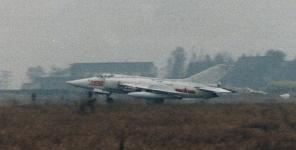
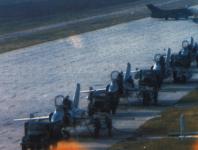

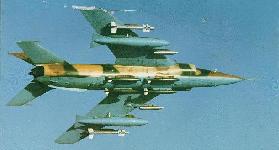
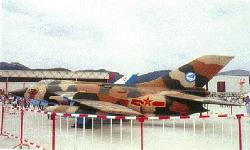
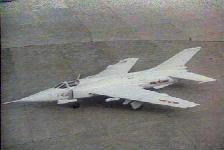
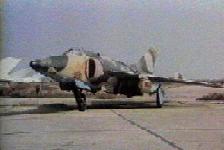
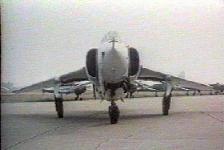
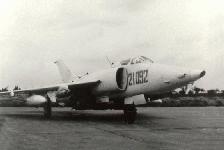
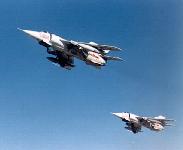
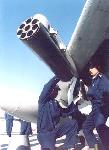
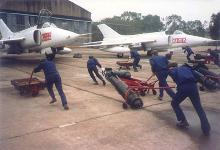
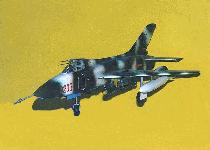
All information and photos Copyright of
FAS.org
18
posted on
12/12/2003 7:14:45 AM PST
by
Johnny Gage
(Everybody is someone elses weirdo)
To: msdrby
Navy ping
19
posted on
12/12/2003 7:34:56 AM PST
by
Prof Engineer
(...just a moment, just a moment...I've detected a fault in the AE35 unit.)
To: SAMWolf
KEWL, SAM. Always been fascinated with subs.
Here's a photo of the first USS TINOSA (SS-283). This is the boat my father-in-law served aboard during WWII. Little humor to add to this post. Seems submariners were required to take a more difficult swimming test than others serving in the Navy. George never learned to swim. He got a buddy of his to take the test in his place. :)

USS Tinosa (SS-283)
Navigation: use the links below to view more comments.
first 1-20, 21-40, 41-60, 61-80 ... 121-136 next last
Disclaimer:
Opinions posted on Free Republic are those of the individual
posters and do not necessarily represent the opinion of Free Republic or its
management. All materials posted herein are protected by copyright law and the
exemption for fair use of copyrighted works.
FreeRepublic.com is powered by software copyright 2000-2008 John Robinson
















































